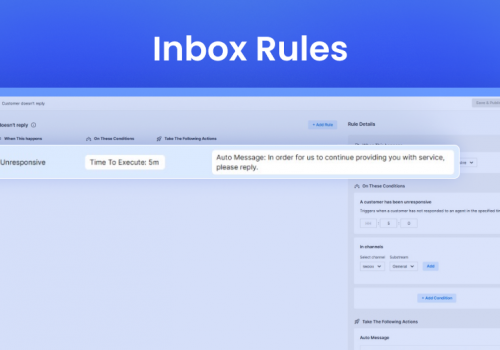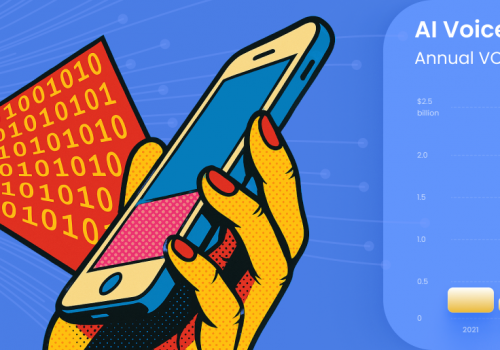When it comes to pain points, you have to ask yourself “how much am I willing to pay to resolve this pain?”. The history of business is littered with stories of companies solving customer pain points to edge out their competitors. Without getting into a heated Apple vs Android or Windows debate, I hope we can all agree that Apple has marketed itself as a company that offers a simple and consistent experience that “just works”. What they lack in sheer power or customization, they make up for in reliability. This is an example of responding to a pain point. Apple didn’t invent the first MP3 player, the first tablet, the first smartphone, or the first smartwatch. But they did create a product that people wanted to use. They addressed the pain points in the technology that inspired their products and the rest is history.
Finding and resolving your customer pain points is a great way to set yourself apart from the competition and show your customers that you care. When it comes to pain points, there are 3 areas to focus on.
- Finding your customer’s pain point.
- Earning their trust
- Solving the pain point for them
That’s what we’re going to be focusing on today. By identifying and resolving customer pain points you provide better customer experience and customer experience is a top priority for businesses going into 2020.
What Are Customer Pain Points?
Put simply, customer pain points are a specific problem that customers or prospective customers of your business are experiencing in the marketplace. They are essentially any problems that the customer may experience along their customer journey. Now, of course, these problems can be extremely diverse and identifying all of them may not be as easy as you initially think. Getting to the bottom of your customer pain points involves a degree of thinking outside the box and putting yourself in the shoes of your customers.
Although a pain point may be a specific problem, either small or large, it is common to group pain points into categories so you can better approach how to resolve them. Let’s take a look at some common pain point categories.
Productivity Pain Points
This category encompasses all pain points where the customer wants to be more efficient or wants a more streamlined experience when dealing with companies. These customers want to make the most of their time so anything that adds redundancy to the buying process will cause them frustration.
You can reduce redundancy and friction within your buying process by implementing things like fewer steps in the checkout process and using intelligent agent routing for customer service. But it’s not just about making your business more productive and therefore more attractive to the buyer. It’s also about offering products that attract customers that want to be more productive. When it comes to the products you offer you want to focus on the following characteristics if you want to solve productivity pain points:
- Optimizing productivity: how can your product help your customers use their time efficiently? Most of us can empathize with the wanting to make better use of our time, and this desire is particularly common in the digital age where we’re only offline when we’re asleep. According to one survey, the average employee is interrupted from their work 56 times a day. If you can tell your prospective customers how your product will make them more productive and give them a boost of focus, then you’ll appeal to these buyers.
- Increase Comfort: the more positive the experience the customer has with your product, the more likely they are to use it. For customers who are particularly prone to productivity pain points, comfort can be another way to increase their productivity. After all, you’re more productive when you’re happy and comfortable with what you’re doing or using.
- Convenience: Customers often favor something easy and convenient over something cheaper but less convenient.
Customer productivity pain points may not be a top focus for all business, and it will depend on what products and services you offer. If you offer software for work or home use, then increased productivity is probably a key feature of your product. However, if you sell shoes, then it might be a stretch to say a new pair of shoes will make you more productive and give you more time to spend with your family. The point is not all customer pain points are equal, so you shouldn’t treat them as such. How equal they are will depend on your company and what you offer to your customer base.
Find out more about the CommBox smart customer communication solution
Support Pain Points
Support pain points are areas where your customers aren’t receiving help during the buying process. If a customer can’t find an answer to a pressing question either on your website or by getting a timely response from customer service, they will go elsewhere.
Financial Pain Points
Financial pain points are areas where prospective customers are spending too much money with their current providers or products and want to cut back on their spending. Put simply, financial pain points are time problems customers face that involves money. Here are some examples of financial point points:
- Expensive subscription plans or membership fees.
- Low-quality products that will need to be replaced frequently despite being marketed to last.
- Fees added on to at the checkout.
- Lack of transparency about the final price.
- Fees dramatically jumping up after a certain time period.
Process Pain Points
Process pain points are areas where your business is creating friction or pain for buyers due to sub-optimal processes. Sometimes this might be something easy to identify like your call center is only open for 8 hours a day, or customers have to trawl through lots of pages on your website just to get to the information they need. Customers love convenience so they will switch to another brand if they find the buying process too difficult with your company. In fact, around 75% of people are likely to switch brands if they find the purchasing process too difficult. However, sometimes the process pain points may be less obvious to you which is why it’s so important to talk to your customers.

How to Identify Your Customer Pain Points
Now we understand what customer pain points are, we need to know how to identify them. This is what you need to do.
Perform Qualitative Market Research
Qualitative market research focuses on detailed responses from customers where they have the opportunity to explain their problems in full. This contrasts with quantitative market research which focuses on yes or no questions and answers or a 1-10 scoring system. Qualitative market research is favored because of a few reasons:
- Quantitative market research is too restrictive for identifying pain points. Quantitative research is great for situations that have little grey area. For example, it’s often useful for conducting surveys with the intent of gathering customer data for marketing. You may ask “How many hours do you spend on your phone each day?”. The answers could be 0-2 hours, 2-4 hours, 4-6 hours, and so on. However, with pain points, there often isn’t a simple answer.
- No two customer pain points are the same. You can group pain points into categories as we discussed in the last section, but the pain points can still vary significantly within the groups. By allowing the customer the opportunity to fully explain their pain point you can better identify which pain points are common, which aren’t, which are serious buying blocks, and so on.
- You need to ask the right questions. This one is so important and is a major reason why quantitative market research isn’t suited here. As business owners or employees, we often struggle to put ourselves in the shoes of the customer and see things from their perspective. After all, you know your business inside out and you know what you offer the customer. However, you may not be aware of how aware the customer is to that information. Additionally, you may be totally unaware of a pain point your business is able to resolve but that you’ve never even considered. If you’ve never considered this pain point, then it’s probably not included in your questions for customers. This is why qualitative research is so powerful. You have the opportunity to ask open-ended questions where the customer can go into as much detail as they like. You may also choose to offer an open forum to shed light on their experiences without being directed.
Talk to Your Customer Service and Sales Teams
Your customer service and sales teams are on the frontline of your business talking to customers every day. This makes them invaluable sources of information when it comes to customer pain points. However, it’s important that your agents understand the difference between their pain points and the customer’s pain points. If their systems aren’t working correctly, that might be something you want to address but it’s not the focus of this exercise so don’t let it get off track. Agents may get feedback from customers like “I liked your product when I bought it last but it’s far too expensive without a discount, so I went with a different company this time”. Or “I was surprised to see extra charged added on at the checkout that I wasn’t expecting so I don’t want to buy from you again”. These would be examples of financial pain points and represent an area of your business where you may be missing out on significant profits by turning customers away with your practices.
It’s also worth noting that pain points are something that needs to be continually considered and reviewed. Customer pain points shift over time as their expectations of the market shift. Also, it wouldn’t be realistic to address every pain point a customer comes up with, some customers may never buy a product over a certain price because that’s just how they live their life. You need to be aware of when a pain point is something you can solve and when it wouldn’t add any real value.
Tips on How to Resolve Customer Pain Points
Ok so you know your customer pain points, now you need to offer solutions.
Know How to Solve the Pain Point and Make Sure Your Customers Know Too
Once you’ve identified a customer pain point, then it’s time to come up with a plan on how to resolve it. The solution will vary greatly depending on what the customer’s pain point is and what your company can offer in terms of a solution.
For example, you may identify a “confusing and hard to navigate customer service channels” as a customer pain point. Plenty of consumers will abandon their purchase if they can’t find a quick answer to their question online. They may have searched your website and been unable to find an answer. They may have gone on your Contact Us page only to find that they have to send an email that will only get them a response within 5 working days. Or maybe they have to call customer service, but the times are too restrictive, or they simply don’t want to because it’s not their preferred method of communication.
You choose to switch to an omnichannel platform with a more flexible and well-rounded approach to customer communications. By this we mean you may offer a range of customer communication options that suit a range of preferences such as Chatbots, Live Chat, WhatsApp, Calls, Contact Field Forms, and emails. Chatbots work 24/7 so you can now help customers with any pressing questions they have in the moment.
Next, it’s crucial to make sure your customers understand that you solve this pain point. Your marketing material should include information about how available your company is for communication and the range of options you offer.

Address Common Pain Points That Require Little Effort
There are plenty of customer pain points that don’t require significant investment from your company to solve. For example, a common customer pain point is rude employees. This is easy to address. You may need to do some research into what exactly customers perceive as rude (besides the obvious) and train your employees on how to handle aggressive or rude customers without the conversation escalating. Here are some other common pain points:
- Not being listened to. Customers hate having to repeat themselves because it makes them feel as though you’re not engaged in the conversation and focused on helping them.
- Putting customers on hold. Similar to the last point, the customer doesn’t like feeling forgotten or undervalued. Putting customers on hold is a quick way to lose customers in a world where customers expect immediate answers and attention. According to some research, putting customers on hold for one minute will result in 60% of them hanging up.
Offer Clarity and Transparency
There’s nothing wrong with taking customers on the journey to a better future for your company. If you’re making changes to address pain points, then tell your customers. If you made changes in the past, then telling the story of how you identified these pain points and resolved them is a great way to let customers know that you care about their experience. It will make customers more confident in your brand since they will you that you make their customer experience a priority.
Conclusion
Identifying customer pain points and offering a solution to them offers a range of benefits for your business. You will attract new customers who are tired of dealing with the pains and frustrations they are experiencing with your competitors. You will be able to convince previous or one-time customers to come back to your business by letting them know how you’ve improved. You’re also more likely to retain the customers you already have as you continually improve their experience with an excellent service.
According to research by American Express, US consumers are willing to spend 17% more to do business with companies that deliver excellent service. What’s particularly significant about this statistic is that it’s up from 14% in 2014.
Consumers now care more about receiving an excellent service that exceeds their expectations and is frictionless from start to finish than they ever have in the past. This is no easy task for businesses in the digital age but with the explosion in AI and other advanced technologies, we’re finally delivering.
With the business landscape being as competitive as it is, you can’t afford to sit back and ignore the real experiences of your customers or your prospective customers. You should take the time to map out a plan for tackling your customer pain points. How do you want to go about asking consumers? Do you want to invite them into your office or a public space where they can offer their honest opinions? Do you want to send them an online free-text survey? Both are great options. The first step is getting to learn the pain points, then thinking of solutions, and finally, putting the solutions into action. It’s time to get started!




















